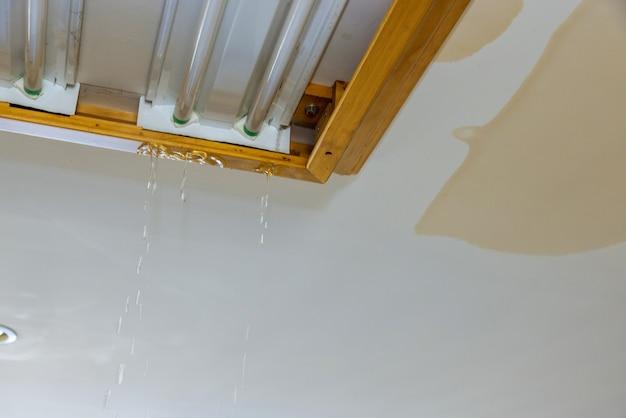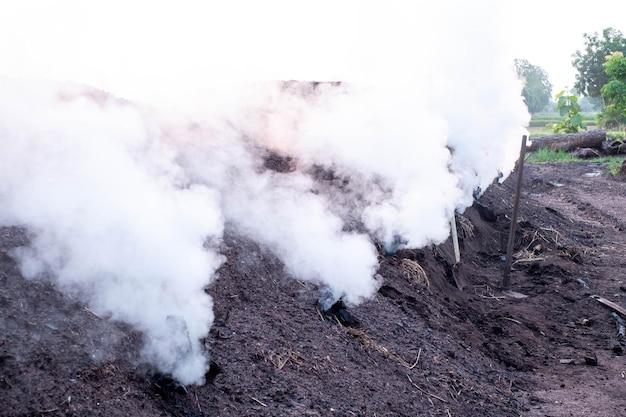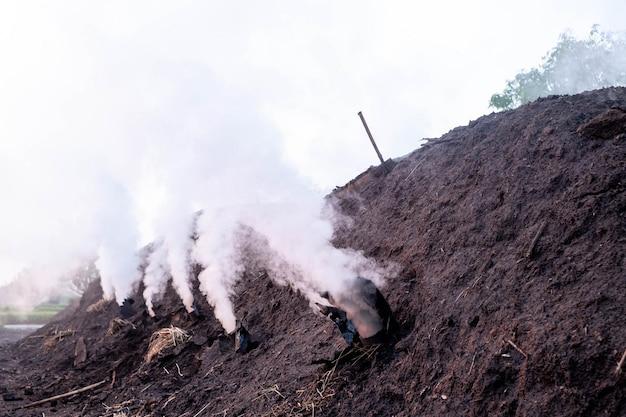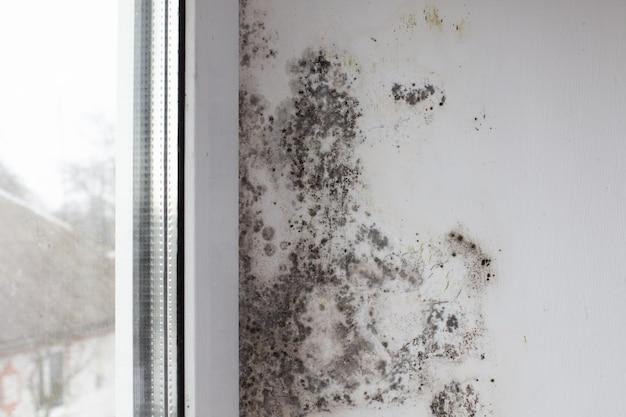If you’ve noticed mold spots on your air conditioning vents, you’re not alone. Mold growth around AC vents is a common problem that many homeowners face. Not only does it look unsightly, but it can also pose health risks and affect the efficiency of your HVAC system. In this blog post, we’ll explore the causes of mold around AC vents and provide you with practical tips on how to clean and prevent it. We’ll also address common concerns such as the dangers of mold on air vents and early signs of black mold. So, let’s dive in and uncover the secrets to a mold-free home!
What Causes Mold Around AC Vents
Understanding the Mold Menace
Ah, the sweet relief of cool air on a sweltering summer day. Your trusty air conditioning unit works tirelessly to keep your space comfortable and enjoyable. But beware the lurking menace that could be hiding right under your nose – mold around your AC vents!
Moisture: The Culprit
It’s no secret that mold loves moisture, and your AC vents provide the perfect breeding ground for these unwelcome guests. When warm air flows through the cooling coils of your AC unit, it causes condensation. This moisture, combined with the dark and damp environment around the vents, creates an ideal haven for mold to thrive.
Poor Air Circulation: A Recipe for Disaster
Another common culprit behind mold growth around AC vents is poor air circulation. If your vents are obstructed by furniture, curtains, or anything else that hampers the flow of air, it can create stagnant pockets where moisture accumulates. These stagnant areas become fertile grounds for mold spores to settle and grow.
A Battle of Humidity
High humidity levels can also contribute to mold growth around AC vents. In humid climates or during humid seasons, excess moisture in the air can find its way into your vents. The combination of humidity and condensation can create an environment where mold can thrive, undisturbed and unseen.
Ductwork Dilemmas
The condition of your ductwork can also play a part in mold growth around AC vents. Leaks or damage to the ducts can introduce moisture into the system. When this moist air reaches the vents, it can create the perfect conditions for mold colonies to take root and spread.
Prevention is the Key
Now that we know what causes mold around AC vents, it’s time to tackle prevention. Regular maintenance is crucial – change your filters regularly to ensure proper airflow, and keep your vents clean and unobstructed. Additionally, investing in a dehumidifier can help control the humidity levels in your space, making it less favorable for mold to thrive.
Mold around your AC vents can be a nightmare, but with a little knowledge and preventive action, you can keep those pesky mold spores at bay. By understanding the causes of mold growth, you’ll be better equipped to maintain a clean and healthy environment in your space. So, let’s raise our glasses to fresh, cool air – without the unwelcome companionship of mold!
Mold Spots on AC Vents
Understanding the Pesky Mold Spots
It’s there, lurking in the shadows, ready to make your life miserable: mold spots on your AC vents. But fear not, for I’m here to shed some light on this not-so-pleasant phenomenon and help you understand why it happens and what you can do about it.
The Culprits: Humidity and Condensation
Mold spots on AC vents are often caused by a combination of factors, with humidity and condensation leading the charge. When warm, moist air meets the cooler surface of your AC vents, it creates the perfect breeding ground for mold. And before you know it, those pesky mold spots start to appear.
The Battle Plan: Prevention
While it might seem daunting, preventing mold spots on your AC vents is not an impossible task. Here are a few tips and tricks to help you keep the mold at bay:
1. Maintain Indoor Humidity Levels
Keeping your indoor humidity levels low can work wonders in preventing mold growth. Ideally, aim for a humidity level between 30% and 50%. Invest in a dehumidifier if needed, and make sure your home is properly ventilated.
2. Check for Leaks
Leaky pipes or a poorly sealed AC system can contribute to excess moisture in your home. Regularly inspect your system for leaks and address any issues promptly.
3. Cleanliness is Key
Regularly cleaning your AC vents can help prevent mold spots from taking hold. Use a mild detergent and warm water to gently wipe away any dust or debris. Don’t forget to wear gloves and a mask to protect yourself from any potential allergens.
The Last Line of Defense: Removal
Sometimes, despite our best efforts, mold spots may still appear on our AC vents. If that happens, don’t panic; we’ve got you covered. Here’s a simple method to rid your vents of those unwelcome mold spots:
1. Create a Cleaning Solution
Mix equal parts white vinegar and water to create a natural, mold-fighting cleaning solution. The acetic acid in the vinegar is a potent weapon against mold.
2. Clean and Disinfect
Dampen a soft cloth or sponge with the cleaning solution and gently scrub the affected areas. Make sure to thoroughly clean the mold spots and remove any traces of mold.
3. Rinse and Dry
Once you’ve successfully cleaned the mold spots, rinse the vents with clean water to remove any leftover residue. Then, allow them to dry completely before reassembling.
Wrapping Up
Mold spots on AC vents can be a nuisance, but armed with some prevention techniques and a handy cleaning solution, you can keep those pesky spots at bay. Remember, maintaining proper humidity levels, addressing leaks promptly, and keeping your vents clean are the keys to combating mold growth. So, go forth and conquer the battle against mold spots on your AC vents with confidence!
What Kills Mold in AC Vents
Introduction
Mold growth around AC vents can be a frustrating issue that affects the air quality and cleanliness of your home. It not only looks unsightly but can also pose health risks. In my previous blog post, we explored the causes of mold around AC vents. Now, let’s dive into the solutions and discuss what kills mold in AC vents.
Natural Remedies for Mold Removal
Vinegar: The Versatile Mold Killer
Vinegar is a household staple with incredible mold-killing properties. Mix equal parts of white vinegar and water in a spray bottle, and generously spray the affected areas. Let the solution sit for a few hours to break down the mold. Wipe clean using a damp cloth and repeat the process if necessary. Vinegar not only eliminates mold but also acts as a natural deodorizer.
Harness the Power of Hydrogen Peroxide
Hydrogen peroxide is another effective mold killer. Pour 3% hydrogen peroxide into a spray bottle and apply it to the moldy areas. Leave it for 10-15 minutes to allow the peroxide to work its magic. Afterward, scrub the area and wipe it clean. Remember to wear protective gloves and ensure proper ventilation while using hydrogen peroxide.
Tea Tree Oil: A Potent Antifungal Agent
Tea tree oil is a natural antifungal agent that can help eliminate mold and inhibit its growth. Mix a teaspoon of tea tree oil with a cup of water and put the solution in a spray bottle. Spray it onto the moldy areas and let it sit without rinsing. The strong aroma of tea tree oil will dissipate, and the oil’s antifungal properties will eradicate the mold.
Professional Solutions to Banish Mold
Hire a Mold Remediation Expert
For severe mold infestations, it’s advisable to seek professional help. Mold remediation experts have the necessary knowledge and tools to eliminate persistent mold. They will conduct a thorough inspection, identify the source of the problem, and implement effective solutions to remove the mold and prevent its recurrence.
Upgrading Your HVAC System
In some instances, the mold problem may be rooted in an inefficient or improperly maintained HVAC system. Upgrading to a more advanced and mold-resistant HVAC unit can help address the issue effectively. Consult with an HVAC specialist to explore the best options for your specific situation.
Mold growth around AC vents can be a bothersome problem. However, with the right strategies, you can successfully kill and prevent mold in your vents. Natural remedies like vinegar, hydrogen peroxide, and tea tree oil offer effective solutions, while professional assistance and HVAC upgrades provide long-term prevention. By taking proactive measures, you can ensure clean and healthy air for you and your loved ones. So say goodbye to mold and enjoy fresh, mold-free air with these solutions!
Mold on Air Vents: Is it Dangerous
Mold on air vents can be a worrisome issue for homeowners. Not only does it look unsightly, but many people also wonder if it poses any health risks. In this section, we’ll explore whether mold on air vents is dangerous and what you should do if you find it in your home.
Understanding the Dangers
When it comes to mold on air vents, the main concern is the potential for indoor air quality problems. As mold spores spread through the ventilation system, they can be released into the air you breathe. Breathing in these spores can lead to a variety of health issues, especially for individuals with mold allergies or respiratory conditions.
Some common symptoms of mold exposure include coughing, wheezing, nasal congestion, throat irritation, and eye irritation. In more severe cases, individuals may experience shortness of breath or even asthma attacks. So, while mold on air vents may not be immediately life-threatening, it can certainly have a negative impact on your health.
Taking Action
If you spot mold on your air vents, it’s important to address the issue promptly. Ignoring it can lead to further mold growth and potential health risks. Here are a few steps you can take to manage the problem effectively:
1. Assess the extent of the mold growth.
Before tackling the mold issue, take the time to evaluate the size and severity of the infestation. If it’s a small amount, you may be able to clean it yourself. However, if the mold covers a large area or is affecting the functionality of your HVAC system, it’s best to call in a professional for assistance.
2. Hire a professional mold remediation specialist.
Mold remediation is a specialized task that requires expertise and proper equipment. Hiring a professional ensures that the mold is safely and thoroughly removed from your air vents. They will also identify and address any underlying causes of the mold growth to prevent it from reoccurring.
3. Improve ventilation and control moisture.
To minimize the risk of mold growth in the future, it’s crucial to improve ventilation in your home and control excessive moisture. Use exhaust fans in bathrooms and kitchens, ensure your home is properly insulated, and fix any leaks or water issues promptly. By reducing excess moisture, you can create an environment that is less favorable for mold growth.
While mold on air vents may not be something you want to deal with, it’s essential to take it seriously. The potential health risks associated with mold exposure make it crucial to address the issue promptly and effectively. By understanding the dangers and taking the necessary actions, you can maintain a healthy and mold-free living environment.
How to Clean Mold around Air Vents
Step 1: Gather Your Supplies
Before starting the cleaning process, make sure you have all the necessary supplies. You will need:
- Protective Gear: Wear gloves, safety goggles, and a mask to protect yourself from mold spores.
- Cleaning Solution: Mix equal parts water and vinegar or use a commercial mold cleaner.
- Soft Brush: Use a soft-bristled brush to scrub away the mold gently.
- Clean Cloth: Keep a clean cloth nearby to wipe away excess moisture.
Step 2: Turn Off the HVAC System
To ensure your safety and prevent further spread of mold spores, turn off your HVAC system. This will prevent the air circulation from carrying the spores to other areas of your home.
Step 3: Clean the Vent Cover
Start by removing the vent cover. If it’s attached with screws, use a screwdriver. If it’s a removable grille, simply pull it out. Place the cover in a sink or bathtub filled with warm soapy water or the cleaning solution you prepared.
Step 4: Scrub the Vent
While the cover is soaking, use the soft brush to gently scrub the inside of the vent. Be thorough but careful not to damage any delicate parts. Remove as much visible mold as possible.
Step 5: Wipe Down
Take a clean cloth and dampen it with the cleaning solution. Wipe down the inside of the vent, ensuring you reach all areas. This will help eliminate any remaining mold spores.
Step 6: Rinse and Dry
Take out the vent cover from the water and rinse it thoroughly. Make sure to remove all soap residue. Allow it to air dry completely before reattaching it to the vent.
Step 7: Prevention is Key
To prevent future mold growth, it’s essential to address the underlying cause. Check for any moisture issues in your home, such as leaks or poor insulation. Keep humidity levels in check and consider using dehumidifiers if necessary.
Step 8: Regular Maintenance
Make it a habit to clean your air vents regularly, at least once every few months, to prevent mold buildup. Regular maintenance will keep your HVAC system working efficiently and help maintain a healthy indoor environment.
Now you have a clear roadmap to tackle the pesky mold around your air vents. By following these steps and taking preventive measures, you can keep your home mold-free and ensure the best air quality for you and your loved ones.
Early Stage Signs of Black Mold in Air Vents
Musty Odor: The First Clue
One of the earliest signs that black mold may be lurking in your air vents is a distinctive musty odor. If you catch a whiff of something unpleasant whenever your AC kicks on, there’s a chance that mold is making itself at home within your vents. Don’t ignore it; investigate further.
Visible Dark Spots: Never a Good Sign
If you notice small, dark spots around your air vents, it’s time to pay attention. Black mold can appear as tiny specks or larger patches, often in a circular or irregular shape. Take a closer look: if they’re fuzzy or slimy to the touch, you may have a mold problem on your hands.
Allergic Reactions: Sneezing and More
Another early warning sign of black mold in your air vents could be the onset of allergic reactions. Sneezing, itchy or watery eyes, congestion, coughing, and even skin irritation can all be indications that mold spores are being circulated throughout your home. Keep an eye on these symptoms, especially if they worsen indoors.
Increased Humidity: A Breeding Ground
Black mold thrives in damp environments, so if the humidity levels in your home have been consistently high, it might be an invitation for mold to flourish in your air vents as well. Invest in a hygrometer to measure the humidity levels in different areas of your home, keeping an eye out for any prolonged spikes.
Doing Battle with Persistent Illnesses
If you or your family members have been continuously suffering from respiratory issues, frequent headaches, or unexplained fatigue, black mold in your air vents could be to blame. These symptoms can be particularly worrisome, as black mold is known to negatively impact indoor air quality and overall health.
Identifying the early signs of black mold in your air vents can help you take prompt action and prevent further spread. From that musty odor that catches your attention to visible dark spots, allergic reactions, increased humidity, and persistent illnesses, being aware and proactive is key. Don’t let black mold take hold – address these early signs promptly to ensure a clean and healthy living environment for you and your loved ones.
Black Stuff Coming Out of Air Conditioner Vents
What is That Black Stuff
If you’ve noticed mysterious black particles coming out of your air conditioner vents, you’re not alone. It’s a common issue many homeowners face, and it can be quite perplexing. So, what exactly is that black stuff?
Mold: The Sneaky Culprit
In most cases, the black stuff is actually mold. Mold thrives in warm, damp environments with poor ventilation, making your air conditioner vents the perfect breeding ground. When moisture accumulates in your HVAC system, it creates the ideal conditions for mold growth. As a result, you may start noticing those unsightly black particles being blown into your living space.
Why Does Mold Love AC Vents
Air conditioner vents have all the elements mold needs to flourish. They provide moisture from condensation, darkness, and organic matter (such as dust) for mold to feed on. The combination of these factors allows mold spores to multiply and release the black particles you’ve been noticing.
Health Concerns: Should You Be Worried
While coming into contact with mold isn’t ideal, it’s important to note that not all mold is dangerous. However, exposure to certain types of mold can lead to respiratory issues, allergies, and other health problems. If you or your family members are experiencing unexplained symptoms like coughing, sneezing, or itchy eyes, it might be worth getting your vents checked for mold.
Prevention and Remedies to Keep Your Vents Mold-Free
To keep the black stuff at bay and ensure your vents remain mold-free, there are a few effective prevention and remedy methods you can employ:
Keep Your Air Conditioner Clean and Maintained
Regularly clean and maintain your air conditioner to prevent mold growth. Change filters frequently, remove dust from vents, and schedule professional HVAC maintenance to ensure proper airflow and ventilation.
Control Humidity Levels in Your Home
Mold loves moisture, so keeping humidity levels in check is essential. Use dehumidifiers in damp areas and make sure your home is adequately ventilated, especially in areas prone to moisture accumulation.
Improve Air Circulation
Proper air circulation is crucial for preventing mold growth. Make sure furniture, curtains, or any obstructions do not block your vents. Additionally, fans or ceiling fans can help improve air circulation and prevent stagnant air.
Professional Mold Remediation
If you’ve noticed a significant mold problem or if you’re unsure about handling it yourself, it’s best to call in professionals. They have the knowledge and tools to assess the situation and provide effective mold remediation.
Discovering that black stuff coming out of your air conditioner vents can be quite unsettling. However, with a little understanding and the right preventive measures, you can keep your vents mold-free and your indoor air quality healthy. Stay on top of maintenance, control humidity levels, and call in professionals when needed. By doing so, you’ll be able to enjoy fresh, clean air and bid farewell to those pesky black particles.
How to Prevent Mold Growth Around Air Vents
Inspect and Clean Your Vents Regularly
Start by visually inspecting your air vents on a regular basis. If you notice any signs of mold growth, it’s time to take action. Grab a flashlight and a screwdriver, and open up those air vents. Give them a thorough clean with mild soap and warm water, making sure to remove any dirt, dust, or mold spores that may have accumulated.
Improve Ventilation
Mold thrives in moist and stagnant environments, so improving ventilation around your air vents is crucial. Open windows, use fans, or invest in a dehumidifier to keep the air circulating and dry. Not only will this discourage mold growth, but it’ll also make your home feel fresher and less stuffy.
Use Mold-Resistant Paint or Coating
Consider applying a mold-resistant paint or coating to the walls and ceiling near your air vents. This extra layer of protection can help prevent mold spores from taking hold and spreading. Plus, it adds a stylish touch to your home décor. Talk about a win-win!
Keep the Area Around Vents Clean and Dry
Make it a point to regularly clean and dry the area around your air vents. Dust and dirt can accumulate quickly, providing a cozy breeding ground for mold. Use a damp cloth or a vacuum with a brush attachment to remove any debris. Then, wipe the area dry to ensure moisture doesn’t linger.
Fix Any Leaks or Water Intrusions
Water leaks and intrusions are a dream come true for mold. If you notice any water damage near your air vents, it’s vital to fix the issue promptly. Check for leaking pipes, roof leaks, or condensation problems. The sooner you address the source of moisture, the better chance you have of preventing mold growth.
Maintain Proper Humidity Levels
Mold loves humidity, so it’s essential to keep it in check. Aim for a relative humidity level of 30-50% in your home. You can use a hygrometer to monitor humidity or invest in a humidifier or dehumidifier to adjust the levels accordingly. Strike the right balance, and mold won’t stand a chance!
Ensure Adequate Insulation
Proper insulation in your home can help prevent moisture buildup that leads to mold growth. Inspect your insulation to ensure it’s in good condition and is effectively keeping moisture out. If you notice any weaknesses or areas that need improvement, consult a professional to address the issue promptly.
Preventing mold growth around air vents requires vigilance and a proactive approach. By inspecting and cleaning your vents regularly, improving ventilation, using mold-resistant paint, keeping the area clean and dry, fixing leaks, maintaining proper humidity levels, and ensuring adequate insulation, you’ll be taking significant steps to eliminate mold from your surroundings. Remember, with a little effort and attention, you can keep your air vents mold-free and enjoy a healthier, safer living space.
Now that you know how to prevent mold growth around air vents, it’s time to take action and breathe easy!



